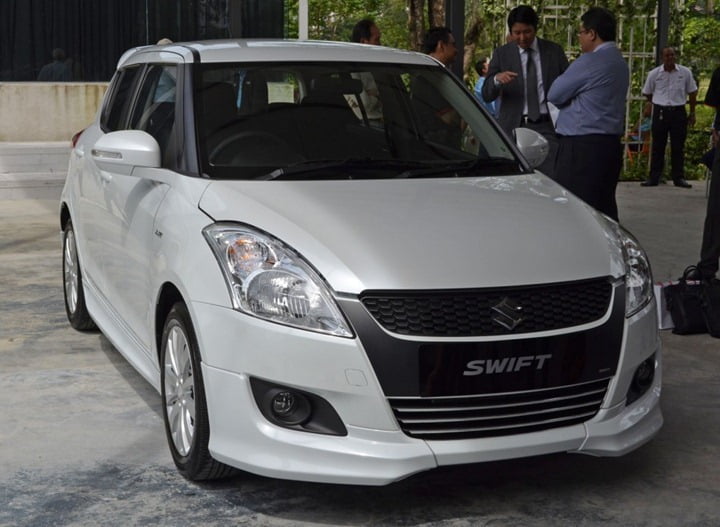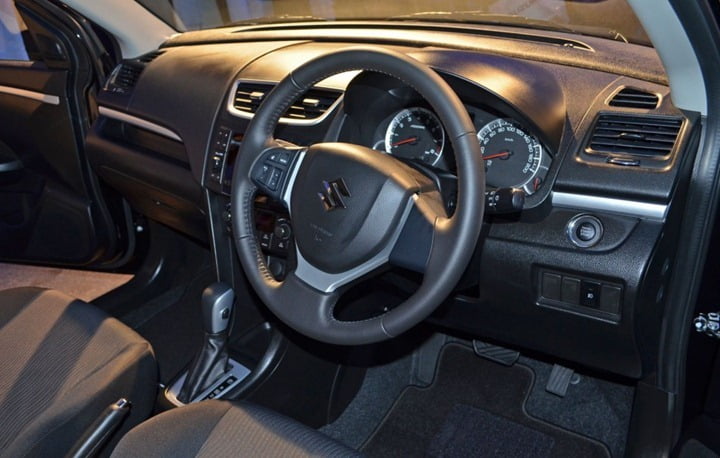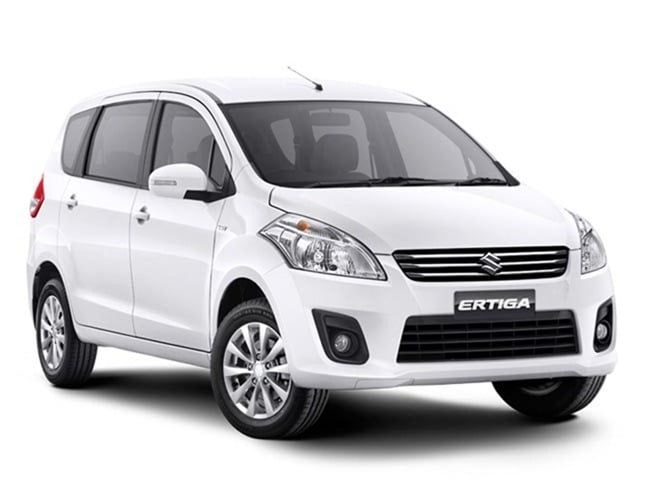Even as Honda prepares to unleash the 2016 HR-V -- a vehicle it calls a “gateway drug” to Honda ownership -- into a roaring compact crossover market, it hasn’t turned its back on larger offerings. The stalwart CR-V received a facelift for the 2015 model year and the automaker has redesigned its three-row SUV from the ground up for good measure.
The resulting 2016 Honda Pilot is an eminently practical, tech-laden SUV aimed directly at, to paraphrase a Honda rep, the 1.1 million Americans who need a people-hauler but can’t bear being seen in a minivan. Or at least a healthy chunk of them.
As it enters its third generation, the Honda Pilot has shed its boxy, truck-like looks and picked up a set of 20-inch rims -- a first for Honda -- plus LEDs by the bucketful, a suite of optional safety tech including a collision mitigation system and rear cross-traffic alert, a sleek infotainment system and a whole lot of USB charging points scattered throughout the cabin. It seats seven passengers when equipped with second-row captain’s chairs or eight if you opt for second-row benches.
Additionally the vehicle gets a new-to-Pilot range-topping Elite trim offering those captain's chairs and just about everything else Honda could put into it, save for the HondaVac. Gotta give buyers some reason to look at the comparably priced Odyssey, we suppose.
2016 Honda Pilot Elite in mud
We're sad to say we didn't take the Pilot muddin'. But you can, thanks to a driver-selectable 'mud' mode.
All Pilots come equipped with the same direct-injected 3.5-liter V6; depending on the trim level, you get a six- or nine-speed automatic transmission plus either two- or four-wheel drive.
Good for 280 hp and 262 lb-ft, the V6 makes the ’16 Pilot both more powerful and more efficient than its predecessor (a seamless stop-start system doesn’t hurt fuel economy, either). When equipped with two-wheel drive and the nine-speed automatic the Pilot returns an estimated 23 mpg combined.
The Pilot's i-VTM4 all-wheel drive system, which uses torque vectoring instead of power reduction to direct power to the appropriate wheel or wheels, includes a variety of driver-selectable traction management modes for better performance on snow, mud or sand.
The Pilot can tow, too -- properly equipped 2WD vehicles can haul 3,500 pounds (the same as the Odyssey), and 4WD Pilots have a 5,000-pound capacity. This doesn’t give pickup purveyors much to fear, but it’s enough to haul a camper, boat or flatbed trailer full of a family's worth of dirt bikes.
When the Pilot goes on sale this June, pricing will start at $30,875 for the most basic, two-wheel drive LX model. The fully loaded four-wheel drive Elite sets you back $47,300. (Both prices include $880 destination.) Between those two extremes there’s a dizzying number of trims and price points -- see the document at the bottom of the article for a full breakdown.
2016 Honda Pilot chassis body rendering
An all-new body and a new-to-Pilot chassis help make the third-generation model lighter and more rigid than the previous vehicle. The new Pilot Elite loses 286 lbs compared to the old Pilot Touring, for example.
What's it like to drive?
We spent two days driving the Pilot through the rolling, black barn-dotted countryside in southern Ohio and northern Kentucky. Honda’s drive routes included expressways plus miles and miles of winding, narrow, and often, shoulder-less two-lanes. We’d love to have experienced those roads in something smaller; should Honda decide to bring a certain new sports car stateside, we’d happily retrace the same paths.
A midengined roadster the Pilot is not, however, and we’d be lying if we said the SUV shrinks around you from the driver’s seat; but it doesn’t wallow, either, remaining solid and planted on uneven surfaces -- even when broken pavement seems to spring up out of nowhere while in a relatively tight corner.
Through it all, the Pilot remained composed and quiet -- really quiet, in fact. Upper-level Touring and Elite-trimmed Pilots get more cabin sound deadening than lower trims, but all are better insulated than the outgoing model. An efficiency increasing aerodynamic exterior design helps cut down on wind noise as well; for that we’d gladly trade the second-gen Pilot’s “rugged” boxiness.
2016 Honda Pilot Elite front seats dashboard cabin
Compared to the outgoing model -- as well as most of its competitors from other automakers -- the 2016 Pilot's interior is clean, uncluttered and modern.
We spent most of our time in a nine-speed-equipped Elite, but also managed to get some seat time in a six-speed Pilot. Both displayed substantial all-around improvement over the outgoing model -- it was beginning to feel a little dated -- but back-to-back testing confirmed the Elite was noticeably, though subtly, more refined than the lower-trim Pilot.
This wasn’t just the extra sound-deadening at play: According to Honda suspension damping settings were modified to accommodate the 20-inch wheels found on Elite and Touring trims, versus the standard 18-inchers. So Pilots with the bigger rims actually feel a bit cushier despite the lower-profile rubber they wear.
Whether you opt for a nine-speed or a six-speed, the V6’s power is smoothly delivered and more than adequate. The shifter mechanism unique to the nine-speed takes some adjustment, however: It’s no longer a console-mounted stick. Instead you get a strange little cluster of buttons and switches used to put the car in drive, reverse, etc. Honda says this frees up center console space and makes for one less thing for a purse strap to get snagged on. It’s weird, but we suppose humans are adaptable.
2016 Honda Pilot Elite nine-speed automatic shifting mechanism
This is how you select a gear on a nine-speed-equipped Honda Pilot. It does take some getting used to, but we're sure a few days behind the wheel would do the trick.
From the passenger seat we had some time to take in the much-improved cabin; improvements over the 2015 Pilot are, again, all-encompassing, and until its competitors refresh their offerings the Pilot is probably leading the non-luxury pack. There’s now far less hard plastic in touchpoint areas, and as with the HR-V the decision to shift more controls to a central touchscreen makes for a clean center stack and dashboard.
You’ll either love or hate this recent emphasis on the touchscreen. We’re more or less used to it at this point, though we do once again wish there was a traditional volume-adjustment knob. The ability to zoom in on the fast-acting Garmin-based navigation screen with a simple two-finger pinch (as on, say, an iPad) is slick, though.
Before the drive, we wondered if the Pilot would be treading on Acura territory, especially the new Elite trim. Honda assured us the Pilot was by design less athletic than the MDX. We’re not sure how many consumers notice -- or care -- about the comparative softness of the Pilot’s ride or the relative lightness of its inputs, but there’s not much for an enthusiast to drool over here.
Unless you’re an enthusiast of comfort, of course. Then you’re going to like the Pilot. Whether it spurs defections from Acura remains to be seen.
2016 Honda Pilot Elite third row seats folded
That third row can fit an average-sized adult in a pinch. You'd have no trouble sticking kids back there for a long haul.
Do I want one?
Whether you’ve always aspired to three-row SUV/crossover ownership, or the prospect is something the demands of a growing family have forced upon you, the Pilot is well worth considering.
Almost guaranteed to provide years of reliable, comfortable service to legions of buyers who are (for whatever reason) allergic to minivans, the 2016 Pilot should be a smash hit. The wide range of trims and prices means there’s a Pilot to fit nearly every budget, and for what it’s worth, you can’t get into a conventional minivan for much less.
There’s a reason Honda’s HR-V/CR-V/Pilot lineup is becoming among the most formidable in the business. As with its smaller cousins, the 2016 Pilot is a purposefully designed, competently executed people-hauler powered by a characteristically smooth motor.
From the packaging to the performance, it's Honda at its most utilitarian. In other words, it's exactly what this ever-growing corner of the market demands.


























